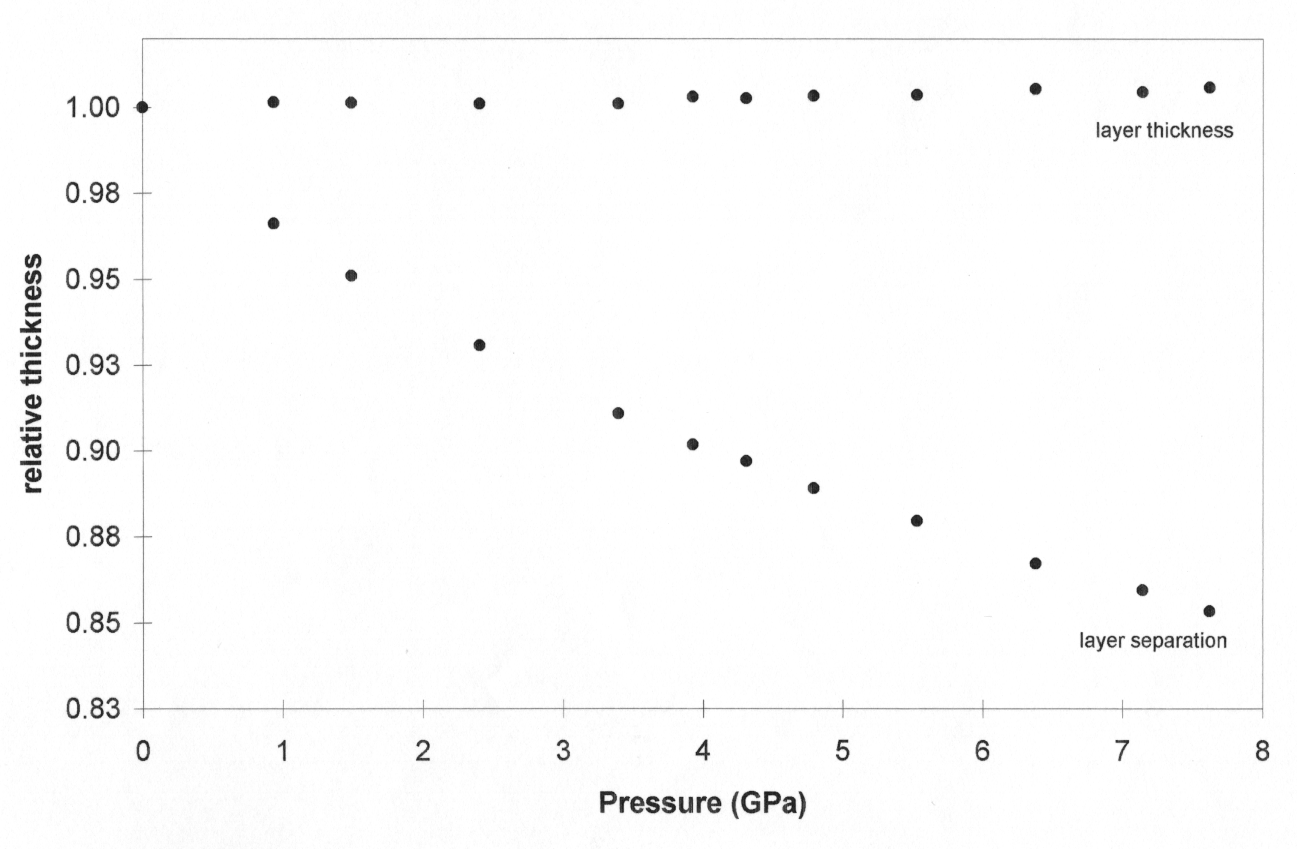

The family of layered transition-metal dichalcogenides exhibit a rich diversity of physical properties and, recently, there has been much interest in the superionic conductivity of TiS2 � an effect which makes it a very promising solid-state cathode material for new battery systems. TiS2 has a very similar structure to that of brucite (Mg(OH)2) and is composed of layers of edge-sharing TiS6 octahedra which are held together by relatively weak van der Waals forces. Recent measurements of the pressure dependence of both the thermoelectric power and the Hall coefficient of TiS2 at ambient temperature showed that there is a significant anomaly at about 4.2 GPa. We therefore determined the structure of TiS2 to 8 GPa by single-crystal X-ray diffraction in a diamond-anvil pressure cell so as to characterise any structural changes that might be correlated with this anomalous behaviour.
Our data indicate that, as expected, the compression of the structure is highly anisotropic with the c-axis decreasing by 7.1% while the a-axis decreases by only 2.7% over the pressure range 0 to 8 GPa. This marked anisotropy is due to the large reduction in the inter-layer distance while the thickness of the layers themselves remains relatively unchanged (it actually expands by about 0.6%; see Fig. 3.3-15).
Surprisingly, there is no significant change in the pressure dependence
of any of the structural parameters over the pressure range studied which
allows us to conclude that the alteration in behaviour of both the thermoelectric
power and Hall coefficient is due to an extremely subtle change in the
electronic structure of the material that does not affect the geometry
of the structure. First-principles electronic-structure calculations, using
pseudo-potential density-functional theory, are currently being performed
to determine the bonding changes with pressure from our experimentally
determined structural parameters.
 |
Fig. 3.3-15: The variation of the thickness and separation of the TiS2 layers in titanium disulphide as a function of pressure as determined from single-crystal X-ray diffraction. The lack of a discontinuity in these data with pressure indicates that the change in electrical properties of the material at ˜4 GPa is a purely electronic phenomenon. |

Tel: +49-(0) 921 55 3700 / 3766, Fax: +49-(0) 921 55 3769, E-mail: bayerisches.geoinstitut(at)uni-bayreuth.de
 Previous page
Previous page